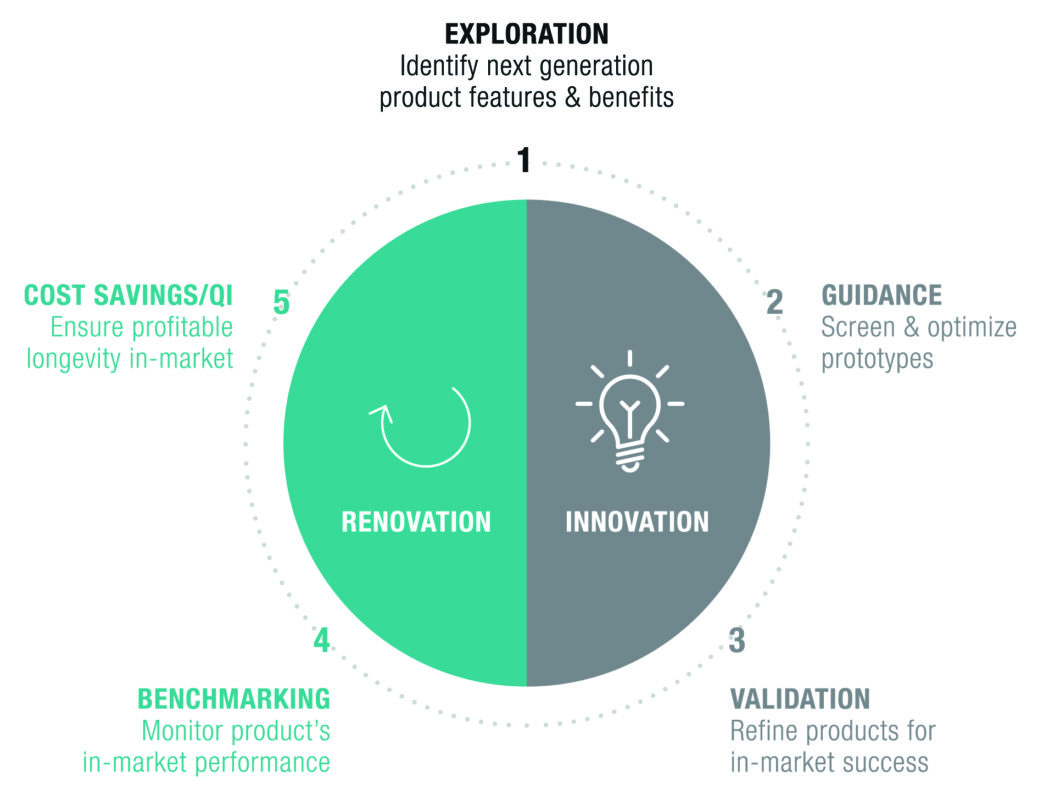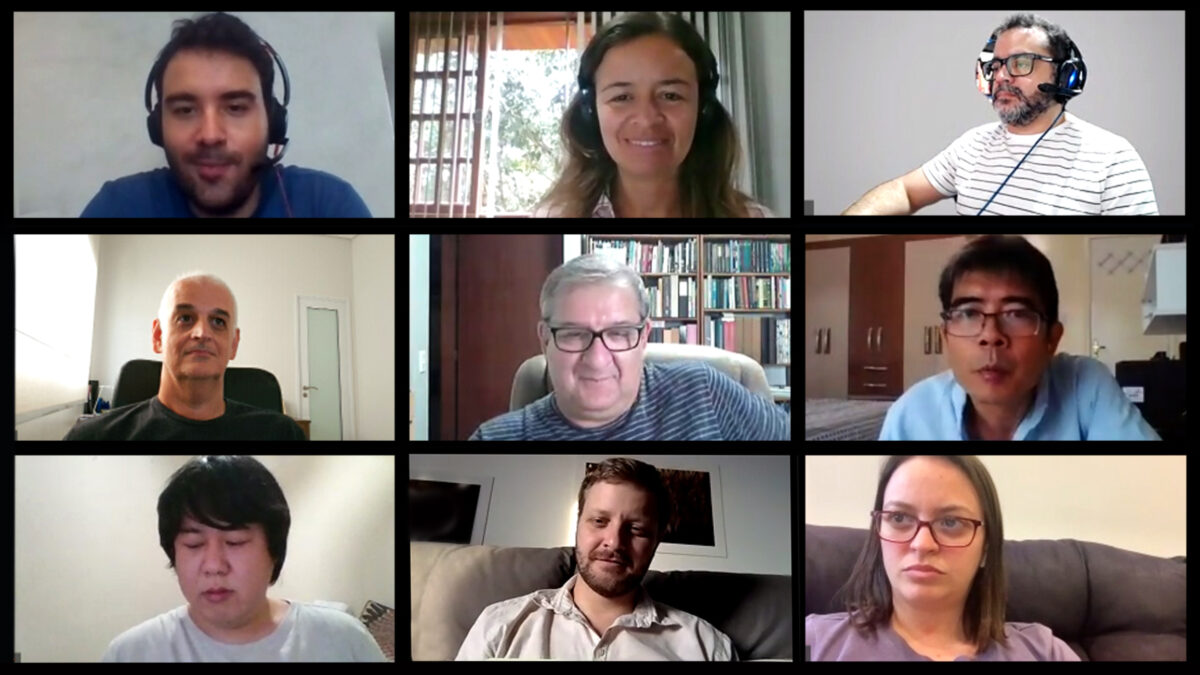A product is both at the marketing mix model’s core and the physical manifestation of a brand’s promise. Awareness and marketing effectiveness generate trial. However, product performance or experience is critical for repeat purchasing. As a result, superior products that delight consumers are necessary for businesses to succeed, particularly in an increasing competitive environment with new, emergent needs.
These product marketing fundamentals have stood the test of time. However, COVID-19 has adjusted our future in unprecedented ways. This means we must adapt how we test products accordingly.
The product lifecycle covers multiple stages, and all of these must be supported to identify new opportunities, adjust to ever-changing market dynamics and to extend a product’s life.
Figure 1: Ipsos Product Lifecycle

Source: Ipsos
An adjusted future with adapted product testing
COVID-19 is impacting consumers, businesses, and governments in unparalleled ways. In times of uncertainty, smart actions can help companies grow when recovery begins. Now is the time to plant the seeds for product’s future success, especially when products must meet new needs and nurture strong brand connections. Continued product development and evaluation are necessary to this as they increase the chances of high satisfaction and repeat purchasing. However, traditional product testing methodologies must adapt to the new world realities as follows:
1. Be contactless
Participant and research staff safety must be top priority, even when COVID-19 is receding. Product testing methods must become “contactless” without sacrificing data quality and depth of understanding, while following local government regulations.
Product packing and shipping:
Product handling and shipment must apply additional hygienic measures beyond previously held industry standards. To ensure confidence in the safety of products, share information to show how the test products have been packaged prior to the contactless delivery. For studies where the design includes multiple products to be tested, all products can be delivered simultaneously and labelled according to usage to reduce consumer interactions.
Data collection:
Is online interviewing the answer?
Online interviewing for product recall should be employed as much as possible to eliminate contact. However, for countries where pure online product testing is not feasible, mixed-mode methods are an alternative and have proven useful in several markets. For example, interviewers who would normally work face-to-face are now interviewing consumers via phone at home with products being shipped using courier services. Interviewers complete the surveys on tablets, uploading the data to a central server where it can be checked for quality and tabulated.
Is Central Location Testing still possible?
As the COVID-19 curve is flattening in some markets and lockdowns are loosened, Central Location Testing (CLT) is becoming an acceptable methodology again in some places. To reduce levels of contact, participants can be pre-recruited online or by phone instead of using face-to-face intercepts from malls or high streets. Group interviewing should be avoided if possible, or it’s highly recommended to test in smaller groups with greater physical space between participants. If COVID-19’s status varies within a country, field markets should be switched to less affected cities.
Any research that is conducted in a facility must apply strict hygienic protocols (Figure 2).
Figure 2: Safe CLT measures must be considered

2. Leverage technology
How can technology transform how information is collected?
Virtual Instant Product Labs – while face-to-face methods are impacted by social distancing, virtual platforms provide a controlled setting to guide product development with confidence. The appropriate sample of around 100 consumers are screened and identified to participate in a virtual lab on a specific day and time. Within the session, a moderator leads the tests by instructing participants how to unpack and use the product that has been shipped to them and participants rate the products via a live survey on the platform. Data are captured and tabulated in real-time, viewable by technical product developers as well as marketers in a “virtual back room”.
Following the quantitative session, participants are selected based on their responses to join a video focus group that delve into the “why” behind the data.
Virtual labs provide rich insights facilitating virtual collaboration among key stakeholders who view the quantitative and qualitative sessions without needing to travel.
Figure 3: Bringing consumers together in a virtual lab

3. Get social
People’s purchases may be impacted by changing shopping habits, especially e-commerce purchasing. How can we leverage this social phenomenon?
Utilizing social rating & review data for in-market products, analysed through a product testing lens is one solution. Two data collection options should be considered:
- Online rating & reviews from eComm sites can be mined to fuel analysis
- Alternatively, panellists are screened for product usage and asked to provide a rating & review as they might online for the products, they already have in their home
In both cases machine learning based algorithms are applied to the open-ended data to compare products through the association of words as they naturally appear in reviews, including sentiment analysis of positive and negative comments. A synthesis of findings including product strengths and weaknesses, comparison to competition and driver analyses are provided all without placing products.
In summary
In the current situation, new needs are emerging. Continued product testing is important to screen and optimize new products and line extensions, ensure that the product delivers on the brand promise, understand product strengths & weakness vs. the competition and to ensure profitable longevity in-market through cost saving initiatives or quality improvements.
Now is the time to act and plant the seeds for future product success.
If you are interested in more information on the evolution of product testing, make sure to download Nikolai’s paper presented during ESOMAR Latin America Insights Festival broadcasted in October 2020 (ed.)


